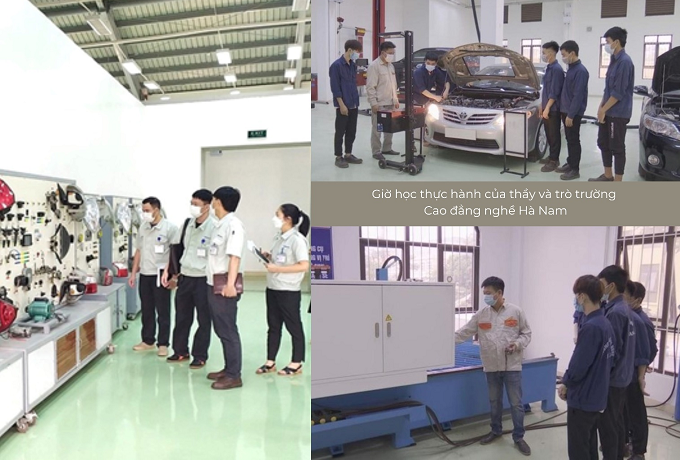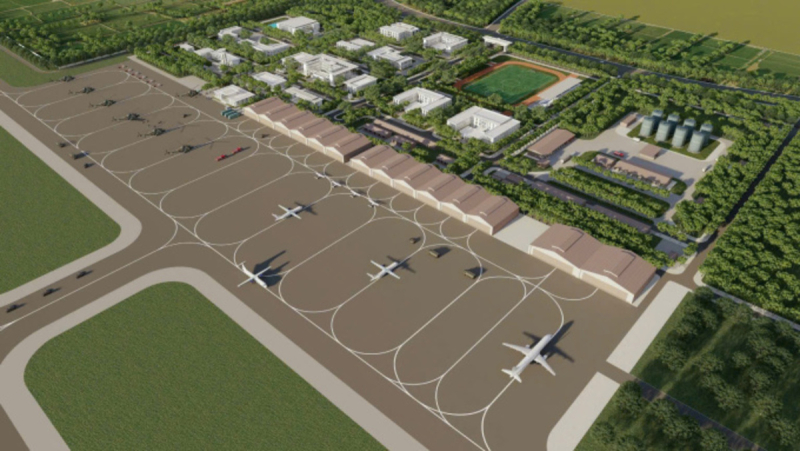- Understand the market
- Market information
- Ha Nam: Attracting investment from a high-quality labor force

Market news
We keep you updated on news and the ongoing changes in your industry, both in domestic and international marketsVocational training meets business needs
Mr. Nguyen Van Hao - Director of the Ha Nam Department of Labor, Invalids, and Social Affairs, stated that over the past years, the quality of vocational education and the workforce in Ha Nam province have been increasingly affirmed and enhanced, meeting the requirements of businesses and the labor market, especially high-quality human resources providing labor for FDI enterprises, key industrial sector enterprises, and high-tech companies in Ha Nam and nationwide.
Currently, Ha Nam has 19 vocational education institutions, including: 05 colleges, 05 intermediate schools, 05 vocational education and continuing education centers, and 04 other institutions with vocational education activities.

In the 2022 – 2023 academic year, the Ha Nam Vocational College had over 1,000 students enrolled in various programs including college, intermediate, and primary levels, with 600 of them being 10th graders.
Accordingly, the quality of vocational training linked to employment solutions in Ha Nam has seen positive shifts with many effective and sustainable partnership models. The main forms of cooperation include: developing training programs; providing production internship locations for students and teachers; participating in the teaching process; offering scholarships to students; supporting training institutions with equipment and recruiting students after graduation, among other cooperative agreements.
Mr. Nguyen Van Hao affirmed that, to meet the increasing demands of businesses, especially FDI enterprises in the province, vocational education institutions in Ha Nam are undergoing strong transformations; they strive to improve the quality of training to meet the practical requirements of businesses.
To date, the province has seen cooperation from 156 businesses with vocational education institutions, with over 95% of graduates being recruited by businesses immediately into jobs that match their trained professions, earning from 6 to 10 million VND per person per month.
The province has also built and updated open data on skilled labor according to each field, profession, and training level to meet the economic and social development needs of the province, especially in new professions and skills such as electricity, electronics, mechanical engineering, supporting industries, services, high-tech agriculture, etc. It has strengthened the application of information technology in matching supply and demand to improve the efficiency of training and labor use.
Enhancing Human Resource Development Solutions
According to Mr. Nguyen Van Hao, Director of the Ha Nam Department of Labor, Invalids and Social Affairs, in the 2021-2025 period, the province will continue to innovate, making strong shifts in enrollment numbers, training quality, and vocational education effectiveness. It emphasizes practical application training, directly training workforce for production and business, contributing to improving labor productivity, national competitive capacity, and ensuring social security.
"The Department of Labor, Invalids and Social Affairs of Ha Nam has regularly organized programs linking vocational education with the labor market to attract the attention of businesses, learners, and society towards vocational education; providing career orientation and job advice to help students, workers choose professions and find suitable jobs; promoting and encouraging students to participate in creative startup movements in the Capital; enhancing the connection between vocational education institutions and businesses; supporting training and retraining; connecting labor supply and demand; supporting the resolution of labor shortages, jobs among economic sectors and production, business, and service fields," Mr. Hao emphasized.
Regarding training human resources for high-tech development, it is necessary to attract individuals, businesses, and related parties to participate in training human resources for high-tech development, such as talented scientists, businesses, developing training linked to innovative research in universities, training and research funding sources; creating jobs in high-tech application fields; attracting foreign investment development; thereby, improving the quality of human resource training.
The province aims to increase the rate of trained labor to 75% by 2025, including a rate of labor trained with certificates and diplomas reaching 60%. The enrollment scale of vocational education institutions in the province by 2025 is expected to reach over 25,000 people; having 03 schools accredited, evaluated, and recognized as high-quality schools; at least 30% of public vocational education institutions are financially autonomous,... Thereby, not only contributing to improving the quality of human resources and solving employment, ensuring local social security but also realizing the goal of making Ha Nam a prosperous province in the Northern Delta region," Mr. Nguyen Van Hao affirmed.
Improving the "labor training" index
Recognizing the importance of improving the business environment and enhancing the provincial competitiveness index. Recently, the Provincial People's Committee has implemented many solutions, contributing to creating a transparent and clear investment and business environment. With the efforts of all levels, sectors, and localities, and the companionship of the business community in the province, in 2022, the province's competitiveness index (PCI) ranked 21st out of 63 provinces and cities, Mr. Hao said.
To continue improving the "labor training" component index in the provincial competitiveness ranking, the Department of Labor, Invalids and Social Affairs will continue to deploy many solutions to improve the quality of the labor force, contributing to the goal of further enhancing the provincial competitiveness index in the coming years.
In the future, the province will strengthen information, propaganda, and create a change in awareness and consensus among levels, sectors, and people about the development of vocational education and employment solutions, especially the companionship of businesses in developing skilled labor to serve the socio-economic development of the province. Effectively implement mechanisms and policies for vocational education development; strengthen digital transformation and online training; focus on retraining and continuous training, ensuring adaptation to labor market requirements. Additionally, closely link the three "houses": Government - Schools - Businesses in vocational education activities. Specifically, continue to review, organize, and rearrange the vocational education system; promote the development of self-reliant and efficient educational institutions.
Improving the quality of vocational education not only ensures sufficient human resources to meet the labor market but also changes the production thinking of young workers. Thereby, creating a dynamic, creative generation with industrial manners suitable for the 4.0 era. This is both a goal and a task that the Vocational Education Development Plan to 2025 in Ha Nam province aims for.
Related articles






Do you need support?
Western Pacific Group's team of experts is always ready to support and provide customers with optimal solutions! Contact us









